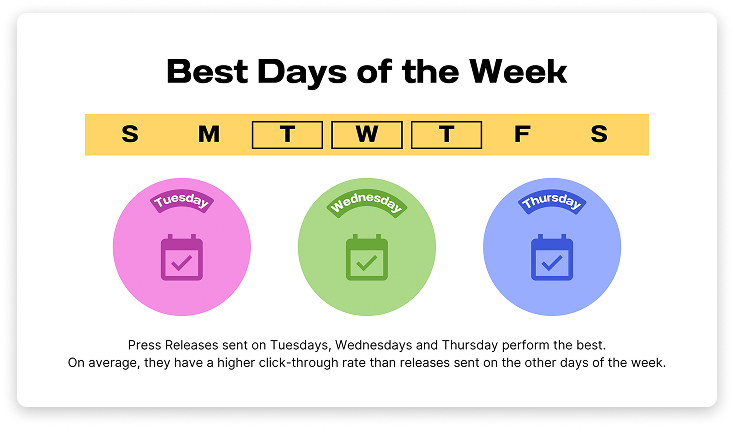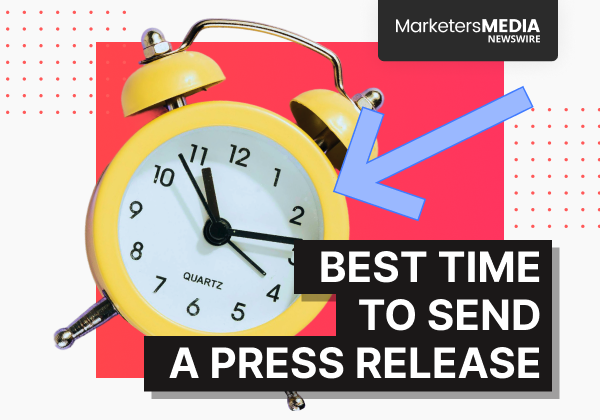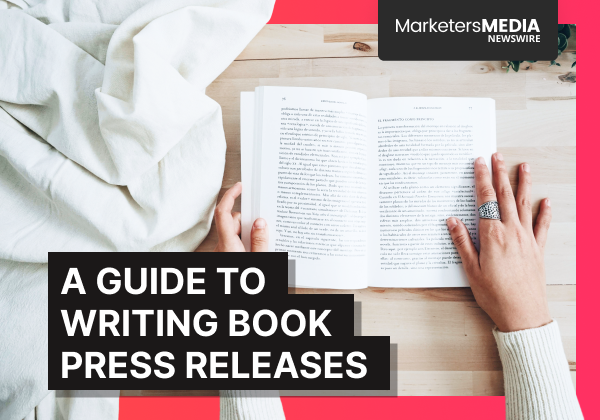“It’s always about timing. If it’s too soon, no one understands. If it’s too late, everyone’s forgotten.”
These words from Anna Wintour, the legendary editor-in-chief of Vogue, ring just as true in the world of press releases. Timing is everything.
Picture this:
It’s Friday, 3:00 PM, and you’ve just wrapped up that press release you’ve been working on for quite some time. It’s big news for your organization, and you’ve crafted every sentence to perfection. But then reality hits—you’re halfway through Friday, and you know that by now, most PR professionals have mentally checked out, dreaming of their weekend plans.
So, what’s the best time to hit “send” on your press release?
It’s a question that keeps coming up in the world of PR and online marketing. It may sound silly, but the answer matters now more than ever with everyone vying for attention. Even the most brilliant press release writers might wonder why their response rates are lower than expected.
Was the writing bad? Probably not. The real issue might just be when you chose to send it.
Ready to find the perfect timing for your press release? Let’s get to it.
The Best Day to Send a Press Release

When it comes to sending a press release, your best bet is midweek—specifically Tuesdays, Wednesdays, or Thursdays, in that order. These days usually give your announcement a better chance to cut through the noise.
Mondays? Not ideal. Everyone’s scrambling to get their news out first, so inboxes get flooded with announcements. People tend to use Mondays to clean out their inboxes, deleting non-urgent emails in an attempt to start fresh for the week. Your press release can easily get lost in this Monday chaos, which isn’t great if you’re aiming for visibility.
Fridays? Well, by then, most folks are already in "TGIF" mode. Editors and PR professionals are more focused on winding down and wrapping up their week than digging into a roster of releases. In short, Fridays aren't great for grabbing attention either.
And weekends? Forget it. There’s a smaller staff working, and people are more interested in their downtime than checking their inbox. Your release is more likely to get buried.
That’s why midweek—Tuesday to Thursday—is your sweet spot. Enough time has passed since Monday’s email chaos, and people aren’t yet tuned out for the weekend.
The Best Time to Send a Press Release
As for the best time to send it, there’s no universal rule. Factors like your content, audience, and media source can all play a role.
But there are some tried-and-true guidelines you can lean on.
Most people aim for between 10:00 AM and 2:00 PM since that’s when click-through rates tend to be higher. But if you’re thinking of sending it earlier, it’s best to wait until around 8:00 or 9:00 AM—anything before that usually gets lost in the shuffle.
Now, here’s something to think about: we live in a digital world where people are connected pretty much all the time. Yep, work-life balance is more of a myth these days, but just because someone can check your press release on their phone doesn’t mean they will—especially when they’re scrolling through memes on a Sunday morning.
So yes, timing still matters.
Speaking of timing, here’s a little tip: instead of going with the usual suspects like 10:00 AM or 12:00 PM, try sending it at an “off” time, like 11:23 AM. Why? Everyone tends to send their releases on the hour, which means there’s a flood of news hitting all at once—not only on wire services, but on social channels and emails too.
By submitting your press release at a slightly odd time, you might just avoid the rush and have a better shot at being seen.
That said, the best time to send really depends on things like your industry, who you’re targeting, the type of news you’re sharing, the lead-time required by the outlets, and so on.
What’s the solution? Test it out.
Try sending press releases at different times and days to see what gets the best response. Testing can reveal some surprising insights. You might find that Fridays or even Saturdays work just as well as a Thursday afternoon, or maybe even better for your particular audience. You never know. It might work!
Other Factors to Consider When Timing Your Press Release
Timing isn’t just about the day or hour you hit send; there’s actually more to think about.
Here’s a few more tips to help you make the most of your press release.
#1 Time Your Release Around News Cycles
Major holidays and high-profile events often overshadow less urgent news.
From October onward, major holidays like Halloween, Thanksgiving, and Christmas, plus events like Black Friday and industry conferences, can flood the media with high-profile news, leaving less room for your announcement. If your press release isn’t timely or relevant to these events, it could get buried.
On the flip side, targeting quiet periods can help your release gain more visibility. Using tools like Google Trends or social media monitoring, you can find lulls in the news cycle where your press release is more likely to grab attention.
#2 Consider Timezones and Local Customs
Time zones matter, especially if you’re targeting a global audience. For instance, if you’re based in the US but targeting Europe, scheduling your release in the morning US time might mean it lands after business hours in Europe, when people are already winding down for the day.
Also, take local customs into account. For example, in many Middle Eastern countries, Friday is a day off for most workers, so sending your release on that day could mean it goes unseen until the next workweek.
In Europe, particularly in Spain and Italy, many businesses close for a few hours during the afternoon for the siesta. Sending a press release during this downtime may cause delays in response.
#3 Be Mindful of Industry Regulations
Some industries have specific regulations regarding the timing of public announcements.
In finance, for instance, companies must observe "quiet periods" before earnings reports, where releasing certain types of information is restricted to avoid insider trading or stock manipulation. It's important to plan accordingly to stay compliant.
Similarly, political announcements need to avoid sensitive times, like right before an election, to comply with regulations or prevent overshadowing major events. Legal and healthcare industries also have regulations in place regarding the timing of news releases, especially when they involve confidential or sensitive information.
So, know your industry’s rules, and make sure your press release is sent at the right time without breaking any guidelines.
#4 Relationship with Editors
Having a good relationship with editors can make all the difference in how your press release is received. If you’ve taken the time to build that connection, they’re more likely to pay attention to what you send—especially if they know you consistently send relevant, high-quality news.
What’s more, editors can sometimes offer advice on when to send your release, helping you avoid those crowded news periods. And if they trust you and your content, they might just bump your release to the top of the pile, even when things are busy.
#5 Scheduling in Advance
Many outlets work with packed schedules and might not be able to accommodate last-minute requests, so it’s a smart move to plan your press release in advance.
If you’re promoting an event or product launch, giving editors and journalists advance notice gives them time to prepare, which can increase the chances of getting coverage.
As a general rule, aim to send your press release at least a week in advance, especially for events. The more lead time you give, the easier for journalists to fit your story into their content calendar and plan proper coverage.
If you’re using a wire service like MarketersMEDIA Newswire, you can easily schedule your press release ahead of time, so you’re not rushing at the last minute. Plus, if you’re unsure about the best time to send, you can always ask your account manager for insights on the ideal timing based on your industry or region.
By planning ahead and getting expert input, you can make sure your release reaches the right people when it’s most effective.
So, let’s go back to that Friday afternoon scenario—what’s the best time to hit "send" on your press release?
As we’ve seen, timing is crucial, but it only works when paired with well-written content. Even the best-timed release won’t succeed if the message isn’t clear or engaging.
Therefore, along with following the tips above, focus on sharpening your writing. Want to see how it’s done? Check out these successful press release examples to learn how to craft a release that gets results.
Free Press Release Template
Tell us where to send your PDF:







